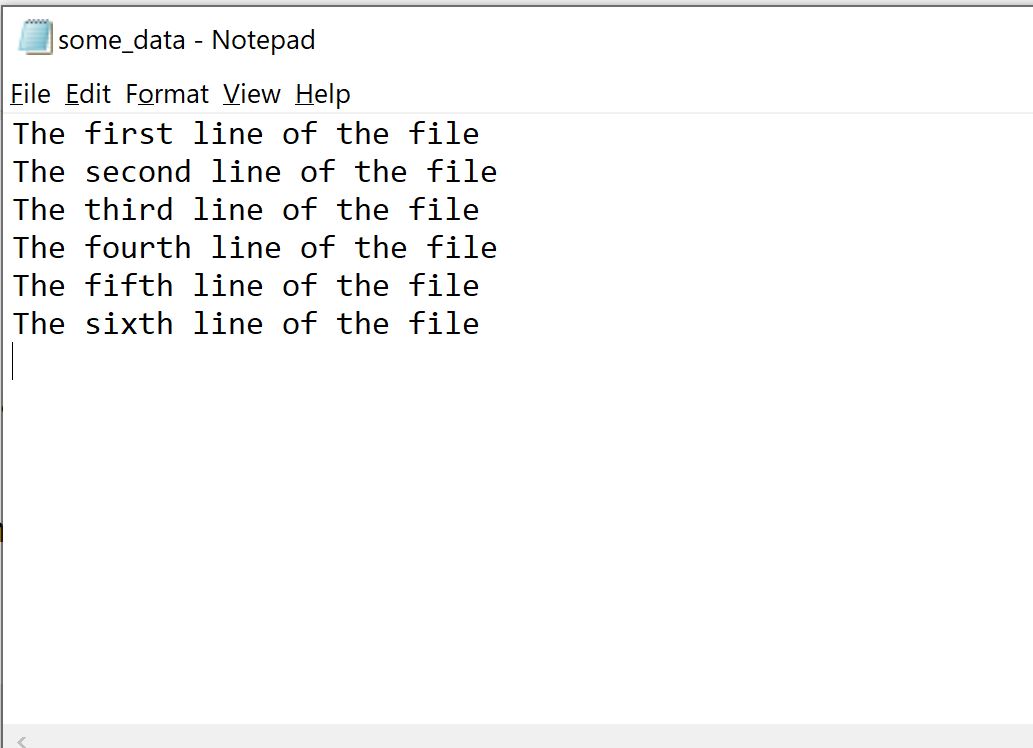如何在 r 中使用 readlines() 函数(附示例)
R 中的readLines()函数可用于从连接对象读取全部或部分文本行。
该函数使用以下语法:
readLines(con, n=-1L)
金子:
- 缺点:连接对象或字符串
- n:要读取的最大行数。默认是读取所有行。
以下示例展示了如何在实践中使用以下名为some_data.txt的文本文件来使用此函数:

示例 1:使用 readLines() 读取文本文件中的所有行
假设该文本文件保存在我的计算机上的“文档”文件夹中。
我可以使用以下readLines()函数读取此文本文件中的每一行:
#read every line from some_data.txt
readLines("C:/Users/Bob/Documents/some_data.txt")
[1] “The first line of the file” “The second line of the file”
[3] “The third line of the file” “The fourth line of the file”
[5] "The fifth line of the file" "The sixth line of the file"
该文本文件包含 6 行,因此readLines()函数生成长度为 6 的字符向量。
如果我愿意,我可以将文本文件的行保存在数据框中:
#read every line from some_data.txt
my_data <- readLines("C:/Users/Bob/Documents/some_data.txt")
#create data frame
df = data. frame (values=my_data)
#view data frame
df
values
1 The first line of the file
2 The second line of the file
3 The third line of the file
4 The fourth line of the file
5 The fifth line of the file
6 The sixth line of the file
结果是一个一列六行的数据框。
示例 2:使用 readLines() 读取文本文件的前 N 行
让我们再次假设该文本文件保存在我的计算机上的“文档”文件夹中。
我可以使用以下带参数n 的readLines()函数来仅读取此文本文件的前 n 行:
#read first 4 lines from some_data.txt
readLines("C:/Users/Bob/Documents/some_data.txt", n= 4 )
[1] “The first line of the file” “The second line of the file”
[3] “The third line of the file” “The fourth line of the file”
readLines()函数生成长度为 4 的字符向量。
我还可以使用方括号导航到该文本文件中的特定行。
例如,我可以使用以下代码仅访问字符向量的第二行:
#read first 4 lines from some_data.txt
my_data <- readLines("C:/Users/Bob/Documents/some_data.txt", n= 4 )
#display second line only
my_data[2]
[1] "The second line of the file"
其他资源
以下教程解释了如何将其他文件类型导入到 R 中: